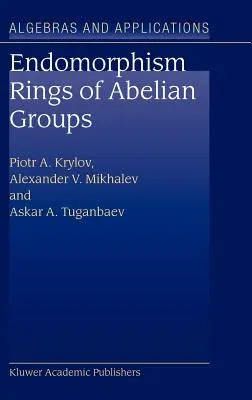P a Krylov
(Author)Endomorphism Rings of Abelian Groups (2003)Hardcover - 2003, 31 July 2003

Qty
1
Turbo
Ships in 2 - 3 days
In Stock
Free Delivery
Cash on Delivery
15 Days
Free Returns
Secure Checkout

Part of Series
Algebra and Applications
Part of Series
Algebras and Applications
Print Length
443 pages
Language
English
Publisher
Springer
Date Published
31 Jul 2003
ISBN-10
1402014384
ISBN-13
9781402014383
Description
Product Details
Book Edition:
2003
Book Format:
Hardcover
Country of Origin:
US
Date Published:
31 July 2003
Dimensions:
23.39 x
15.6 x
2.54 cm
ISBN-10:
1402014384
ISBN-13:
9781402014383
Language:
English
Location:
Dordrecht
Pages:
443
Publisher:
Weight:
811.93 gm